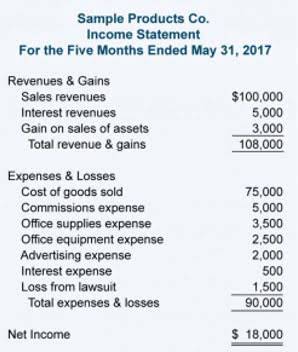
To calculate your daycare’s monthly income, you need to consider the average monthly cost for center-based childcare in your area. For example, according to a 2021 report, the average monthly cost for center-based toddler child care in the U.S. is $1,096. If you have 30 toddlers enrolled in your daycare, you can multiply this average cost by the number of toddlers to estimate your monthly income. Technology is valuable in managing and tracking your center’s income and expenses. As you estimate your operational expenses, include the technology you’ll implement to manage center operations.
What considerations should be made to ensure prices allow the center to stay profitable?
- Yes, offering specialized services such as bilingual education, care for children with special needs, or extended hours can justify higher fees and attract more clients, thereby increasing monthly income.
- Owners must keep an eye on money and everything it encompasses to be successful and profitable.
- Those are completely independent and not provided, commissioned, or endorsed by any company, as our editors follow a strict editorial policy.
- Childcare centers can also make money through registration fees and waitlist fees.
- Keeping this amount updated helps you understand your daycare’s profitability or its ability to turn a profit relative to its amount of expenses.
- Outline your center’s mission, vision, target market, and competitive advantage.
- To ensure that prices allow the childcare center to stay profitable, it is crucial to carefully consider all financial costs and revenue factors.
Automating your transactions and accounting in an all-in-one platform can reduce errors and protect you from costly mistakes, while simplifying the process. Doing this manually is time-consuming and labor-intensive and can lead to outdated financial records. When you need to keep track of multiple income and expense flows, manual record keeping can also be prone to human error.
In-Depth Look at the States With the Highest Cost

You can also offer professional development courses to your staff on topics like empathy building, trauma-informed care, and technology in the classroom. Specialized classes like speech, reading, and math for children with learning delays and cognitive disabilities are also great add-on services. Be sure to pay attention to parent feedback and suggestions for the best additional services to add to your business and implement them one at a time to determine their sustainability. Let’s say, for example, you currently have around 60 children enrolled, while your full capacity is 80 children. This information will help you calculate the appropriate amount of resources needed to serve these children, such as food, supplies, and educational materials.
- With a market size of $54.3 billion and a total of 230,000 Daycare businesses in the country, the average annual turnover for a Day Care facility is $235,000.
- Consider factors such as rent or mortgage payments for your daycare facility, utilities, staff salaries, insurance, and any necessary licenses or permits.
- As your daycare grows and evolves, you may need to make adjustments to your budget to accurately reflect any changes in expenses or revenue.
- Daycare owners can ensure that their business remains financially sustainable by having accurate invoicing and billing processes.
- These premium services can generate $200-$500 additional monthly revenue per child and maintain cash flow during traditionally slow periods.
Calculating Your Daycare’s Monthly Income
- Your budget calculations will be based on estimated monthly costs for each expense item.
- For example, you may have steady tuition payments and additional income from fundraising or grants.
- These programs will attract more families to your business and increase your enrollment rates, helping you generate additional income.
- Manage the finances of your childcare center with this simple financial plan template that makes it easy to record income and expenses.
- It’s also a good idea to gauge what competitors in the area are charging, as families will likely compare prices to ensure what you’re charging is fair.
- Following these guidelines ensures that your daycare expense spreadsheet remains reliable for managing your finances.
The need for quality childcare isn’t going anywhere, and that’s why more entrepreneurs are jumping in. But before you start dreaming of juice boxes and nap times, it’s crucial to understand what really drives profitability in this business. Most daycare businesses achieve profitability within 6-18 months, with key financial benchmarks determining long-term success. Contingency funds of 10-20% of monthly expenses are recommended for unexpected costs such as staff replacement, facility repairs, or enrollment drops during illness outbreaks. Professional services including accounting, legal consultations, and marketing can add $500-$2,000 monthly to operational expenses.

Any preschool or daycare must evaluate its current financial position to ensure sustainability. An evaluation should include an examination of your revenue streams, budget forecasting, and the daycare accounting creation of strategies to improve your financial sustainability. To begin with, you should look at your current income from sources such as parental fees, government funding, and grants.


Because in the end, a thriving daycare is one that makes both children and their parents happy. Two-year operations should demonstrate 15-20% profit margins with stabilized enrollment, established community reputation, and waiting lists for popular normal balance programs. Successful centers achieve full enrollment capacity and begin expansion planning or service diversification. Six-month benchmarks should include covering 50-70% of fixed costs and achieving 30-40% enrollment capacity. One-year targets involve reaching 5-10% net profit margins ($3,000-$6,000 monthly) with 60-80% enrollment stability.

- Manage your daycare’s parent communications, attendance tracking, invoicing, and more with HiMama, the #1 rated childcare management software!
- Although it is an important service, childcare jobs are typically low-paying; however, if you want to retain the best staff in your area, your salaries will need to be competitive.
- Daycare net profits vary dramatically based on operational efficiency, with poorly managed centers earning $1,000-$3,000 monthly while top performers achieve $15,000-$20,000.
- If you’re running a smaller, home-based daycare, congratulations—you’ve got low overhead and decent profit margins to boot.
- These centers are often quite profitable because they have low operating costs and do not require additional workers.
- Having a parent referral program helps to bring in a steady flow of clients who already trust your services, thanks to your existing families raving about your business.
After researching the costs of opening a childcare center, you can reference this sample operating budget and download this free annual budgeting template. Consider what childcare services you’ll offer (e.g., a center-based program, in-home Remote Bookkeeping daycare, or program that serves preschool-aged children). Include educational programs, extracurricular activities, and any additional enrichment offerings.
Laisser un commentaire